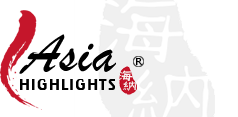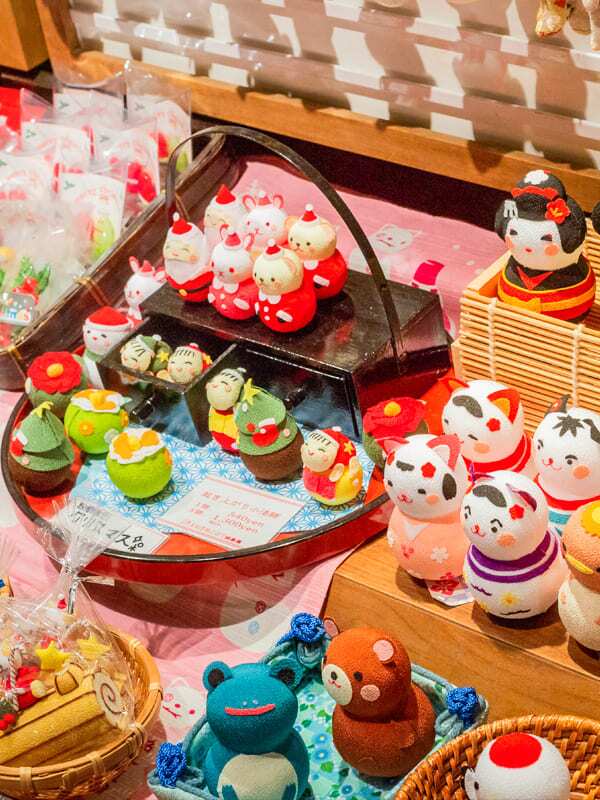|
|
Trip to Japan
Family trip to Japan. Excellent itinerary, allowed for seeing many different sights in multiple cities in Japan. The tour was well-paced with enough time to explore on our own in the evenings. Tour guides were knowledgeable, had great attitudes and were accommodating, willing to modify our plans to allow us to see other sights if we wanted to as well. The vans were large and comfortable for the longer drives and water was always provided.
More
May,
Nov 2023
|
Fall in Japan
The local tour guides in each city were so friendly and knowledgeable. They took care of us like we were family. The accommodations and meals were exceptional. We would definitely use this tour company again for future travel needs.
More
,
Nov 2023
|
Alisa Liu is a star to work makes Asia Highlights even better
Alisa Liu was my contact person for Asia Highlights. She was remarkably punctual, she was thoughtful, and she handle an emergency on my end, with grace and patience. She recommended great hotels in Tokyo, Kyoto and Osaka Japan that put us in the center of the action. The guides she choose were personable, punctual a knowledgeable about their cities.
More
Brent Zadorozny,
Oct 2023
|
Excellent service
Started using Asia Highlights to plan my trip to Japan. Sharon was very helpful, giving me all the information I would need for the tour. I would definitely use Asia Highlights again, when planning another trip to Asia.
More
Rachel Nelson,
Oct 2023
|
Japan tour
Our airport pick-up went very smoothly. Our guide, Vivian, on the second day was very nice, very accommodating, took into account our preferences. In Osaka, our trip to the castle was a very long walk with lots of steps to climb and quite honestly wasn’t very interesting. But Dotonburi is a must-see and we enjoyed that very much.Our trip to Hiroshima was very memorable. I highly recommend it. Our guide, Etsuko, was very knowledgeable and kind. The trip to Miyajima island, on the other hand, wasn’t too memorable. Our next city, Kyoto, is a truly wonderful place to visit. All the temples we went to were very interesting and very distinctive from each other (Kinkakuji temple, Nijo castle, Sanjusangendo temple,Kiyumizo temple, Fushimi Inari shrine, Kasuga Taisha shrine, Tojaidi temple). The sake tour was a downer and wouldn’t recommend it.Our guide, Ritsuko, was a darling. She was very knowledgeable too and kind and warm and easy to talk to. Our last tour in Tokyo was a rainy day and Sue, our guide, was able to change our tour to the next day. She was so efficient and so accommodating and so kind and very knowledgeable too.
More
Mrs Cristina Hidalgo Loris,
Oct 2023
|
Very good tour of Japan
Very good tour around Japan for 10 days, including Tokyo, Hakone and Kyoto. Excellent guides and experiences. Albee, the tour organiser, was always available to sort out changes to itinerary or extra requests.
More
Guy Slimmon,
Oct 2023
|
Everything is good
All of the hotels were wonderful and our guides were super friendly, knowledgeable and flexible. We had a 10 day trip that included multiple cities and lots of different sights, we squeezed in as much as we could, including a 2 day hiking trip to Mt. Fuji (our guide Sun Nan was awesome!). Our guide in Tokyo, Jennifer, was lovely and our guide for 2 days in Kyoto, Dennis, was also super great. We did a food tour in Osaka with Vivian which was nice
Sallie Fujimoto-Swun
More
Ideale Tran,
Oct 2023
|
Thank you for the wonderful experience…
Thank you for the wonderful experience we all truely enjoyed. From the beginning (making first contact with Sharon from Asia Highlights) to the end (Saying good bye to our amazing guide Lilly) the experience was top notch. Great communication while preparing the trip and excellent local knowledge of our tour guide. I can highly recommend Asia Highlights and would not hesitate to use them again for our next trip.
More
Dany Gruosso,
Oct 2023
|
Vacations in Japan
The guides Jessie and Vivian were very kind and professionals and the drivers as well. In a future vacation we will get in touch with Asia Highlights without a doubt.
More
Hilda Andrade,
Oct 2023
|
Experience with Asia Highlights
This was my first time working with a travel agent to plan an international trip and because of the seamless experience I had, I have decided to always work with an agent when booking international trips. Asia Highlights did an amazing job in ensuring we found a trip that worked well for our budget and provided us with special experiences in Japan that exceeded our expectations. From travel logistics in Japan to lodging and activities, we felt taken care of. If I had known that travel agents were this helpful, I would have worked with them in my prior travels. I definitely plan to book my next trip to Asia with this agent.
More
Adie Ballantyne,
Oct 2023
|
Jason and Cathy from Asia Highlights…
Jason and Kathy from Asia Highlights did a great job for us. They were very responsive and professional. Hotel choices and attractions made for a wonderful first time trip to Japan.
More
Norman and Mary Van Zante,
Sep 2023
|
This was one of the best experiences in…
This was one of the best experiences in Travel that I have ever had... and I have traveled extensively. The reliability of the the driver and guide, the kindness each displayed (different people in different cities same result) and the flexibility to work with my family's requests was outstanding. I now wish for this experience where ever I may travel next!
More
Donna Huck,
Sep 2023
|
Prompt response!
First and foremost, this review is based strictly on prompt response from Asia Highlights.I was browsing Asia Highlights website on the night of September 17th 2023 and really impressed of the positive reviews. So I decided to send an e-mail for an estimate of a private tour guide in Tokyo Japan for 6 days/7 nights including hotel accommodation for my 90-year-old father and I. I provided as much information as I can what areas of interest we would like to visit.
I was really expecting a 72-hour delay response from Asia Highlights given time difference in California and Japan. The following day, I received an e-mail from Kate Long. Impressive! Kate provided a very detailed suggested itinerary with great consideration for my 90-year-old father. I truly appreciated her thoughtfulness!
I will definitely reach out to Asia Highlights on our next trip!
Thank you Kate!
More
F K,
Sep 2023
|
Perfectly planned and organized
Albee at Asia Highlights created a diverse, fun-filled itinerary for our trip. She listened carefully to our interests and made sure that we made the best use of our time in Japan. Our local guides, drivers and vehicles were excellent. Albee was always available to answer all my questions with a lightening fast response time. A very memorable experience and I would definitely book with Asia Highlights again.
More
Carol Ann Paget Brown,
Sep 2023
|
Sharon provided great service while…
Sharon provided great service while planning and booking our Japan trip! Unfortunately, we had to cancel due to family medical reasons. Sharon was very understanding of this and helped process the cancellation and refund in a very timely manner. When we are ready to book our trip again, I will certainly be reaching out to Sharon and Asia Highlights!
More
Ali Tahir,
Sep 2023
|
I just wanted to tell you how pleased…
I just wanted to tell you how pleased we were planning and coordinating our recent Japan trip with Alisa Liu. Alisa was responsive, answered questions in a timely manner despite our 15 hour time difference, and coordinated a trip for a 6 person multi-generational tour to everyone's satisfaction. (ages7-70!)We were particularly thankful for her help as 2 typhoons bore down on Japan during our stay. She helped us rearrange train and hotel reservations, and was able to get us a refund from a hotel that would not typically offer that. I have referred other friends to her with confidence.
More
Berdine Bender,
Sep 2023
|
Leah Stine
Not only Albee was great! Each of our guides and drivers were also a joy. Daniel was our first knowledgeable guide who spoke excellent English and was so much fun throughout the day. Jeremy was our guide for the next few days and he also was fun, flexible, and had so many interesting tidbits to share with us throughout the day. Kiko was our guide on the next leg of our journey. She had such a joyful sense of adventure and curiosity that was such a hoot. Vivian was also professional and very aware to what our needs were in the moment. Tian was incredibly flexible and when our plans literally changed when he picked us up, he showed great flexibility and took us to some really fun places at the last minute that were some of our best experiences. And finally Charlie was our last guide and he was so thoughtful and consistently anticipated our needs. By the time we realized we might need something, he would already have it taken care of. All of our guides were so thoughtful and conscious of either making sure we got time to ourselves or of being available right when we needed them. They were each fun and had their own personal flavor that they brought to the experience. We are so grateful for the consideration and flexibility that Asia Highlights showed us consistently and would highly recommend them for anyone interested in visiting Asia. Thank you so much! It was an amazing trip!
More
Leah Stine,
Aug 2023
|
Alisa is awesome!
We have been looking to go to Japan for a long time. The food, the culture, and the rich history have always intrigued us. We tried many times to set up pieces of the trip on our own, but couldn’t put together a sensible vacation. Then we found Asia Highlights and Alisa! She helped us tailor a remarkable adventure to Japan! She answered our many questions and shifted our itinerary to maximize our time in each city. I highly recommend Alisa to help you put together the trip of a lifetime. We are looking forward to our journey!
More
Mark Linn,
Aug 2023
|
When I first book I was scared of what…
When I first book I was scared of what to expect, but oh my God! What an amazing experience this has been, from Sharon to all the guides Shawn and Mr. Ho, such amazing people! Their work is excellent
More
Saul Velez,
Jul 2023
|
Albee was very helpful and responsive…
Albee was very helpful and responsive in helping me make plans for their 10 day Japanese tour.
More
Bhavini Patel,
Jul 2023
|











